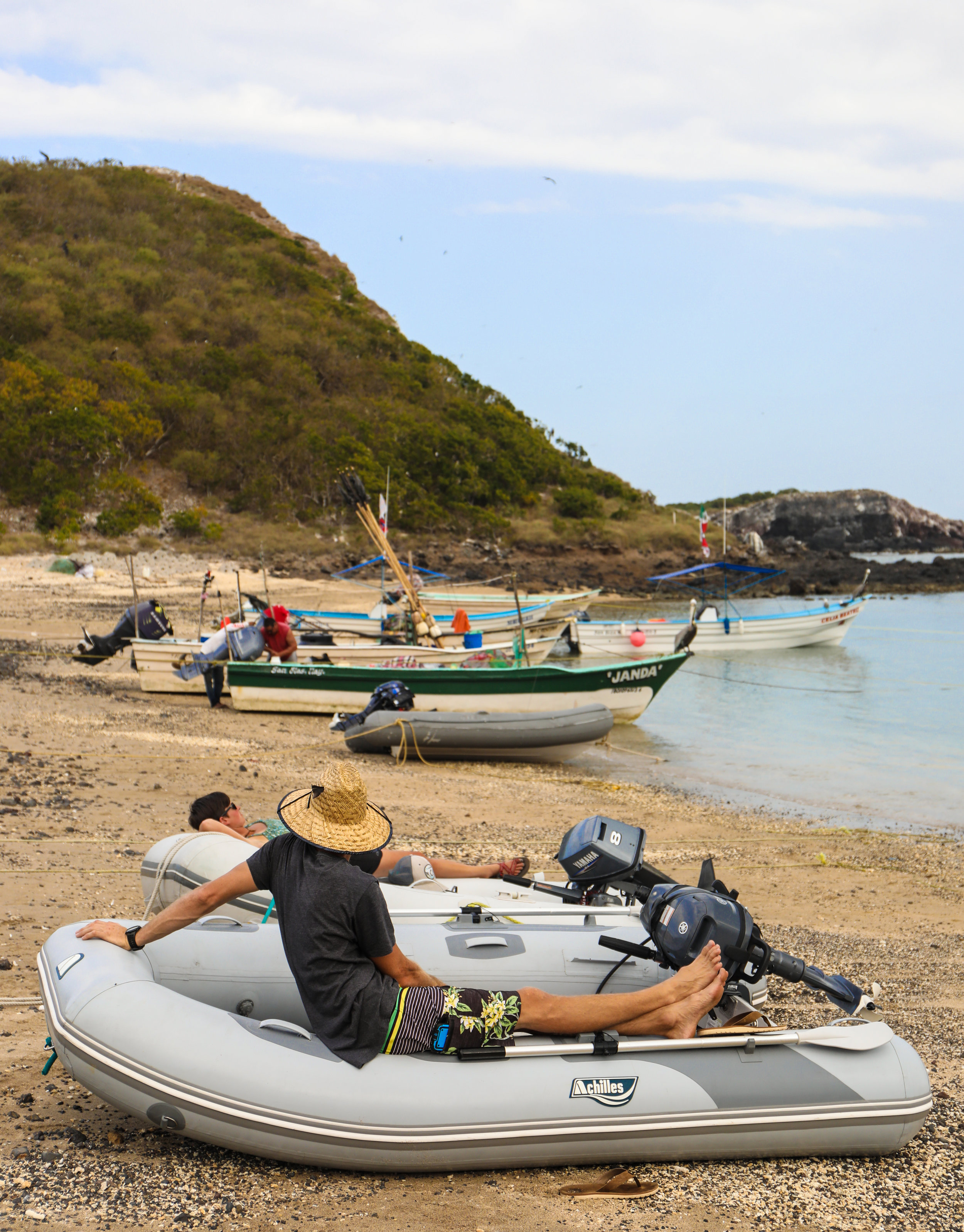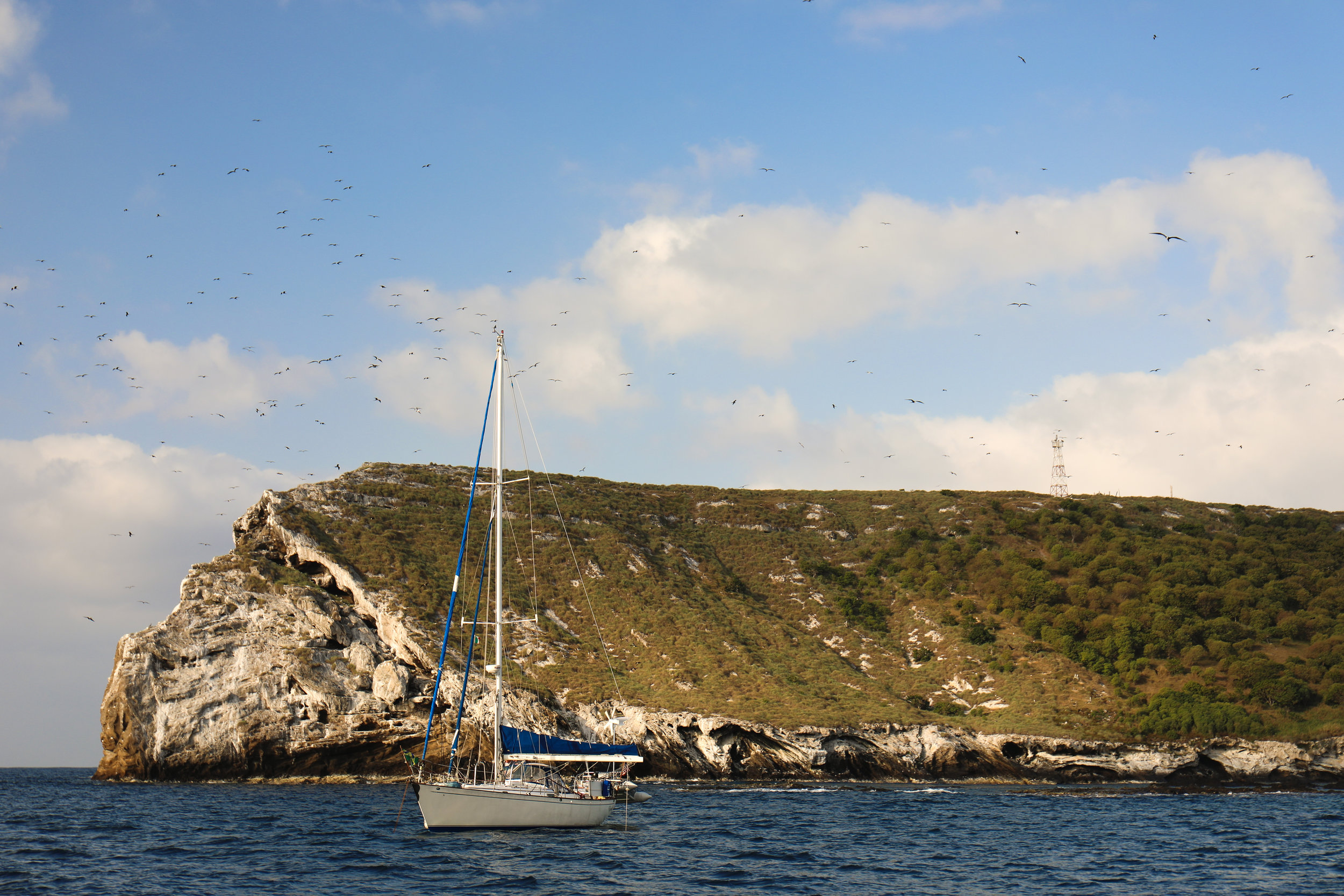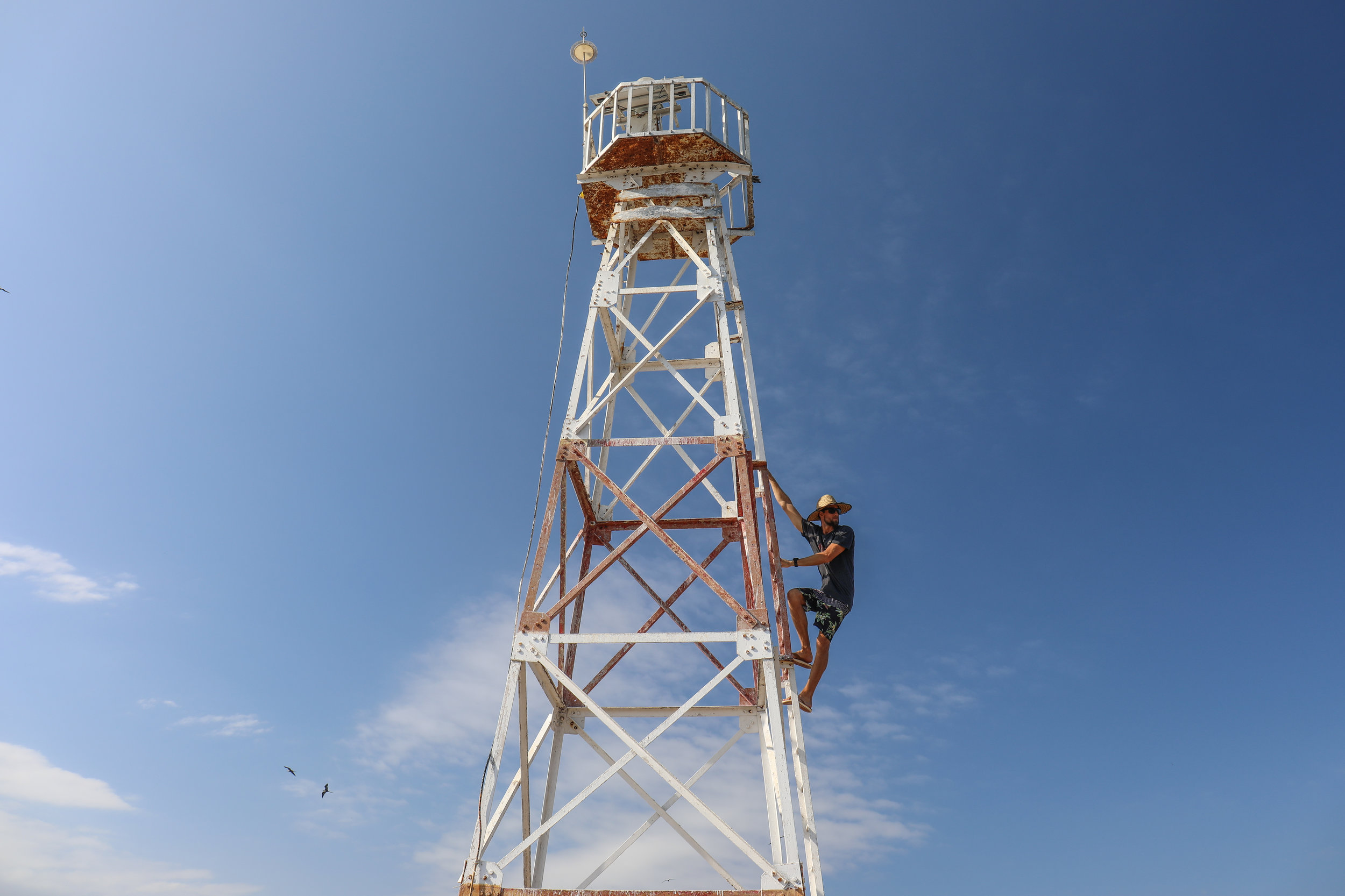Isla Isabel
As sun rose after a very rough 18 hour night passage, we could see Isla Isabel coming into view. The crew was exhausted after a long night of being seasick, the swell period had been a sort 4 seconds, with steep breaking waves off our stern. It felt like being in a washing machine all night. As we neared the island, frigate birds began to soar high above us, gliding effortlessly with their seven foot wingspans.
Just offshore our fishing reel begun buzzing, we had landed a fish, and by the sound of it a BIG one! It fought like crazy, even breaking the tip off our pole. We were hoping for a large tuna as we had been craving sushi for the last two months, but as it reached the surface we recognized it as a crevalle jack. We bled the fish as we entered the southern anchorage, dropping the hook behind an extensive reef extending off the tip of the island.
Photo by John Guillote
I’m still amazed we got away poop free.
Exploring the island’s trails with the crew.
Isla Isabel is an isolated volcanic island lying approximately 18 miles off the mainland coast of Mexico, and 40 miles northwest of San Blas. The island has been nicknamed the “Galapagos of Mexico,” due to its enormous population of nesting birds, thousands of resident iguanas and spectacular underwater scenery. The island became a National Park and deemed a World Heritage Site, resulting in international and national protection, creating a beautiful sanctuary for these animals.
Agape rockin and a rollin.
Photo by John Guillote
In search of the islands best view.
Blue footed boobies!
We spent the next three days hiking and exploring the island, above and below the water. Walking the trails that crisscrossed the island’s interior, ridge tops and remote beaches, we had to be careful where we stepped as there were iguanas piled on top of one another. We saw nesting frigate birds, brown noodles and blue footed boobies, male and female both protecting their eggs and young. Our favorite hike lead us along the cliff face of the southern anchorage, from the top we had a 360 degree view of the island, including the stunning Lago Crater, an ancient caldera now filled with water.
Josh caught checkin out the boobies.
Bird’s-eye view.
Photo by John Guillote
Photo by John Guillote
Photo by John Guillote
Sunset from the cliffs.
Photo by John Guillote
Photo by John Guillote
It was amazing to be in a place where the animals are so blissfully unaware and unafraid of humans. It was like stepping back into time, into a wild place!
Photo by John Guillote




















